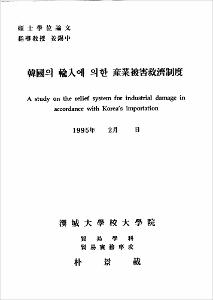韓國의 輸入에 의한 産業被害救濟制度
- Files in This Item:
-
-
Download
 000000066288.pdf
기타 데이터 / 2.29 MB / Adobe PDF
000000066288.pdf
기타 데이터 / 2.29 MB / Adobe PDF
-
Items in Repository are protected by copyright, with all rights reserved, unless otherwise indicated.
 000000066288.pdf
기타 데이터 / 2.29 MB / Adobe PDF
000000066288.pdf
기타 데이터 / 2.29 MB / Adobe PDFItems in Repository are protected by copyright, with all rights reserved, unless otherwise indicated.